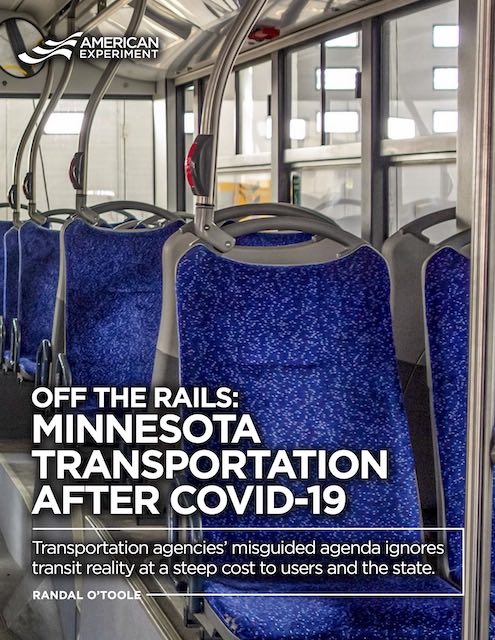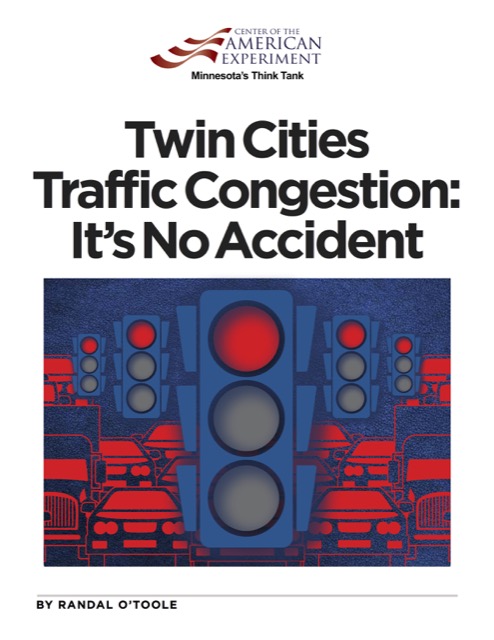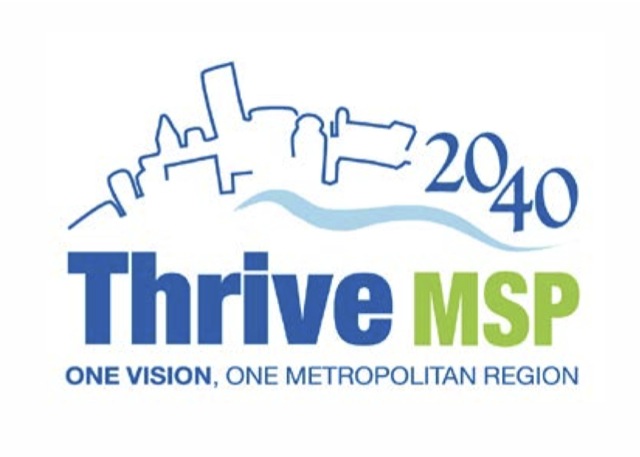Minnesota transportation agencies need to reinvent themselves if they are to survive after the pandemic, according to a new report published yesterday by the Center of the American Experiment, Minnesota’s free-market think tank. Off the Rails: Minnesota Transportation After COVID-19 says that the world has changed so much that any transportation plans written before 2020 will no longer make sense (if they ever did).
 Click image to download a 3.1-MB PDF of this 48-page report.
Click image to download a 3.1-MB PDF of this 48-page report.
In case you can’t read the fine print on the image above, the report was written by yours truly and so all of its themes — increased numbers of telecommuters, the follies of light rail, the importance of funding transport out of user fees, not to mention more than a dozen brightly colored charts — will be familiar to Antiplanner readers. But in some respects, the Twin Cities’ post-pandemic experiences have been more extreme than most. Continue reading









